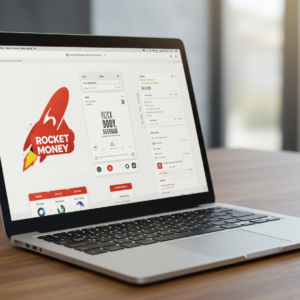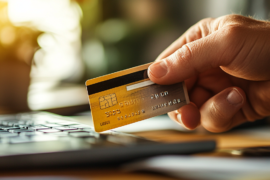This article may contain references to products or services from one or more of our advertisers or partners. We may receive compensation when you click on links to those products or services. Nonetheless, our opinions are our own.
The information presented in this article is accurate to the best of our knowledge at the time of publication. However, information is subject to change, and no guarantees are made about the continued accuracy or completeness of this content after its publication date.
- Key Highlights
- Introduction
- Understanding Copyright and Its Role in Logo Safety
- How Copyright Applies to Business Logos
- Why Securing Your Logo Matters
- Preparing to Register Your Logo
- Evaluating Your Logo’s Originality
- How to Copyright Your Logo: Step-by-Step
- Legal Protections After Copyright Registration
- Enforcing Your Rights
- Key Benefits of Logo Copyright
- Conclusion
- Frequently Asked Questions
- Recommended Reads
Key Highlights
- A logo is an important part of your brand identity, and getting its copyright is key to keeping your business safe.
- Copyright lets you decide how your logo is used, copied, and shared.
- In the United States, copyright law is managed by the U.S. Copyright Office.
- Copyright protection starts when your logo is made and set in a form, but registering it gives you stronger rights.
- Registering your logo shows you own it, allowing you to take legal steps if someone misuses your design.
Introduction
A strong and safe brand identity can help your business stand out in a busy market. Your logo is usually the first thing customers notice about your company. It shows what you value and the services you offer. Since it is so essential, getting legal protection like copyright is a smart way to keep your brand safe and stop others from using it without permission.
Understanding Copyright and Its Role in Logo Safety
Copyright is a legal system that protects creative works, including writing, music, art, and digital content. For businesses, it also covers logo designs that show creativity and new ideas.
Regarding logos, copyright stops others from copying, showing, or sharing your design without asking you first. This legal guarantee ensures your brand images stay in your hands and cannot be taken or misused without a price.
How Copyright Applies to Business Logos
A business logo with unique design features, like graphics, colors, and text styles, is considered protected property. Copyright starts immediately when the logo is made and saved in a set way, like in a digital file or on paper.
While automatic protection is available, registering your copyright with the U.S. The Copyright Office helps your legal position. It proves you own the work, helps enforce your rights in court, and allows you to claim damages if someone uses it without permission.
Why Securing Your Logo Matters
Registering your logo offers several advantages:
- Shows ownership: A registered copyright proves that you made and own the logo.
- Stops brand confusion: It helps keep others from using designs that could confuse customers or weaken your brand.
- Aids in legal action: If someone uses your logo without permission, registration allows you to take legal steps, like sending warning letters or filing lawsuits.
A logo that is protected by copyright—and maybe trademark protection, too—shows that you value your brand. This helps build trust with customers and investors.
Voted "Best Overall Budgeting App" by Forbes and WSJ
Monarch Money helps you budget, track spending, set goals, and plan your financial future—all in one app.
Get 50% OFF your first year with code MONARCHVIP
Preparing to Register Your Logo
Before you submit a copyright application, collect these items:
- A clear digital image of your logo (in JPEG, PNG, or TIFF format).
- The date you created and used the logo publicly (if this applies).
- Your business name and contact details as shown in official records.
- A way to pay the filing fee for the application.
Talking to a property lawyer can be helpful. They can check the originality of your logo’s design and help you with the registration process.
Evaluating Your Logo’s Originality
For copyright to work, your logo must be a unique piece. Designs made of simple shapes, standard icons, or public things might not meet the requirements. To make your case stronger:
- Make sure your logo shows your creative work.
- Steer clear of stock images or ready-made templates.
- Look for logos like yours in the U.S. Patent and Trademark Office (USPTO) database to check for any conflicts.
Note: Copyright guards how an idea is shown (the design), while trademarks protect brand names and symbols in business. Some companies gain from both kinds of protection.
How to Copyright Your Logo: Step-by-Step
Step 1: Search for Similar Works
While copyright does not require checking for uniqueness, it’s a good idea to search the U.S. Copyright Office and USPTO databases. This can help you find any registered designs or trademarks that might cause problems or confusion.
Focus on:
- Looks that are alike in shape, color, or design.
- Companies with names that are alike or working in the same field.
If the same design exists, talk to a legal expert before moving forward.
Step 2: File Your Application
Go to copyright.gov and create an account. Then:
- Choose the “Arts” section for your logo.
- Upload your file in the correct format.
- Fill in details like the date you created it, the creator’s name, and who owns it.
- Pay using a safe method.
After you send in your application, you will receive a tracking number. This number allows you to check the status of your application.
Step 3: Monitor and Respond
The review process may take several months. You might receive requests for more information or clarification. Responding quickly can help avoid delays.
After approval, you will get a certificate of registration. This paper shows that you own your logo and gives you the power to protect it legally.
Legal Protections After Copyright Registration
Once your logo is registered:
- You have the right to take legal action against those who break the law in federal court.
- You can ask for money and lawyer fees in some cases.
- Your registered logo is good proof of your ownership during legal problems.
- You get more power when you send stop notices.
These protections strengthen your ability to manage your brand and help stop others from using it without permission.
Enforcing Your Rights
Registering your logo is the first step. After that, you must watch over it and ensure it’s protected. If someone uses your copyrighted logo without asking:
- Send a letter to stop the action that shows what has been wronged.
- If you need to, file a claim in federal court to protect your rights.
Proactive enforcement helps protect your brand’s reputation and shows competitors and partners that you care about your property rights.
Key Benefits of Logo Copyright
A copyrighted logo provides:
- A legal recognition of ownership
- Protection of the brand from imitation or wrong use
- Credibility with customers and other people
- Essential items for licensing, franchising, or selling in the future
This safety is very important if your business grows or becomes well-known in your field.
Conclusion
For any business, getting copyright help for a logo is a wise choice that helps keep the brand strong over time. Copyright help starts as soon as you create your logo. However, registering your logo with the U.S. The Copyright Office boosts your legal rights and makes it easier to enforce those rights.
Putting money into legal help today can keep your business safe from expensive problems in the future. If you need it, get professional legal support to ensure everything is done right and secure.
Frequently Asked Questions
What is the cost to copyright a logo in the U.S.?
The U.S. Copyright Office charges a fee to file a copyright. This fee usually costs between $45 and $65, depending on the kind of application and how you file it. The official website has the latest rates and payment options.
How long does copyright last for a logo?
In the U.S., copyright lasts for the author’s life plus 70 years. If a company owns the logo, it usually lasts for 95 years from when it is published or 120 years from when it is created, whichever is shorter.
Can I use the copyright symbol before registration?
Yes. You can use the copyright symbol (©) when a work is created and stays in a particular form. But you need to register it to protect your rights in court.
If someone copies my logo that is copyrighted, what should I do?
First, you must talk to a lawyer who knows copyright law. They might suggest sending a letter to stop the copying or taking legal action. A registered copyright makes your case stronger.
Is hiring a lawyer needed for the copyright process?
While it’s not necessary, a lawyer can ensure your application is complete. They can help you check your work is originality and advise if you need to enforce your rights. This help benefits businesses wanting to grow or license their brand.

Reviewed and edited by Albert Fang.
See a typo or want to suggest an edit/revision to the content? Use the contact us form to provide feedback.
At FangWallet, we value editorial integrity and open collaboration in curating quality content for readers to enjoy. Much appreciated for the assist.
Did you like our article and find it insightful? We encourage sharing the article link with family and friends to benefit as well - better yet, sharing on social media. Thank you for the support! 🍉
Article Title: Why Logo Copyright Matters for Your Business and How to Secure It
https://fangwallet.com/2025/04/15/logo-copyright/The FangWallet Promise
FangWallet is an editorially independent resource - founded on breaking down challenging financial concepts for anyone to understand since 2014. While we adhere to editorial integrity, note that this post may contain references to products from our partners.
The FangWallet promise is always to have your best interest in mind and be transparent and honest about the financial picture.
Become an Insider

Subscribe to get a free daily budget planner printable to help get your money on track!
Make passive money the right way. No spam.
Editorial Disclaimer: The editorial content on this page is not provided by any of the companies mentioned. The opinions expressed here are the author's alone.
The content of this website is for informational purposes only and does not represent investment advice, or an offer or solicitation to buy or sell any security, investment, or product. Investors are encouraged to do their own due diligence, and, if necessary, consult professional advising before making any investment decisions. Investing involves a high degree of risk, and financial losses may occur including the potential loss of principal.
Source Citation References:
+ Inspo
There are no additional citations or references to note for this article at this time.












































